Many assume firefighters are safe from burns due to their protective gear, but is that the case? Recent records show that burns at a fire scene are quite rare. So, do firefighters get burned?
The answer, surprisingly, is both yes and no. Despite the high temperatures and intensity of their situations, today’s firefighters are more protected than ever with advanced safety gear.

The risks of burns
Firefighters are more likely to suffer from thermal burns due to contact with superheated surfaces or objects than open flames. Thermal burn often occurs due to prolonged exposure to extreme temperatures and can be dangerous if left unchecked. To prevent such issues, professional firefighters use specialized protective clothing made from materials such as Kevlar or Nomex, which provide superior protection against heat and flames.
According to an NFPA report, there has been a significant drop in the number of on-duty firefighter injuries over the last few years, with only 8% of these injuries being burns. This can, in part, be attributed to the modern safety protocols and protective clothing worn by firefighters today.
However, not all types of burns are prevented by these measures, and some burn injuries still occur for firefighters.
Causes of Fires and the Types of Burns a Firefighter may suffer from
Fires can have many causes and sources, including natural disasters such as lightning strikes and volcanic eruptions, human errors such as improperly stored flammable materials or unattended cooking appliances, and accidents with electrical wiring.
The types of burns that firefighters may suffer range from minor to very serious. Firefighters can get burned in different ways depending on their situation. For example, they may get steam burns if hot steam touches their skin, chemical burns if they come into contact with hazardous substances, thermal burns if they are directly exposed to flames and intense heat.
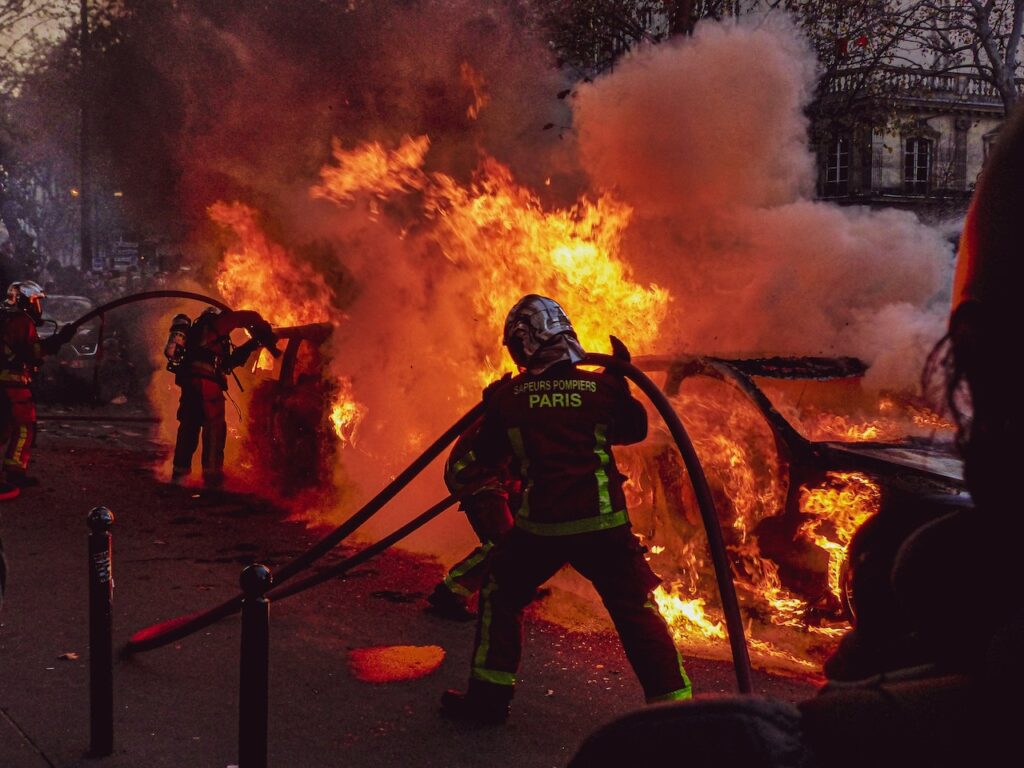
Steam burn
Steam burn is a type of scalding burn that occurs when hot steam is in direct contact with the skin. This type of burn results in redness and swelling but is only considered a first-degree burn because it does not cause severe tissue damage. Therefore, it typically heals quickly without scarring or long-term complications.
In some cases, however, the temperature that the firefighter is exposed to can cause significant thermal damage leading to more serious second-degree burns with blistering and tissue destruction.
Chemical burn
Chemical burns occur when hazardous substances come into contact with the skin or eyes and start to destroy body tissues by burning them away. These chemical reactions can cause blisters on the skin or permanent eye damage if chemicals get into the eyes. Common substances responsible for these injuries include strong acids like hydrochloric acid or sulfuric acid, alkalis like ammonia or caustic soda, bleaches, and fuel oils.
Thermal burn
Thermal burns are another type of injury firefighters may suffer from while on duty. This type of injury occurs when firefighters come into direct contact with flames while fighting fires. It can also happen during rescue operations in dangerous areas near an active fire. The flames can cause significant tissue damage to the outer layer of skin (epidermis) and deeper layers (dermis). This can lead to permanent scarring unless treated quickly after injury.
Firefighters may also get injured in other ways while on duty. For example, firefighters might get fractures if something falls on them during a fire. They could also slip, trip, or fall on slippery surfaces. These injuries can happen in addition to the four main types of burns that firefighters may experience.
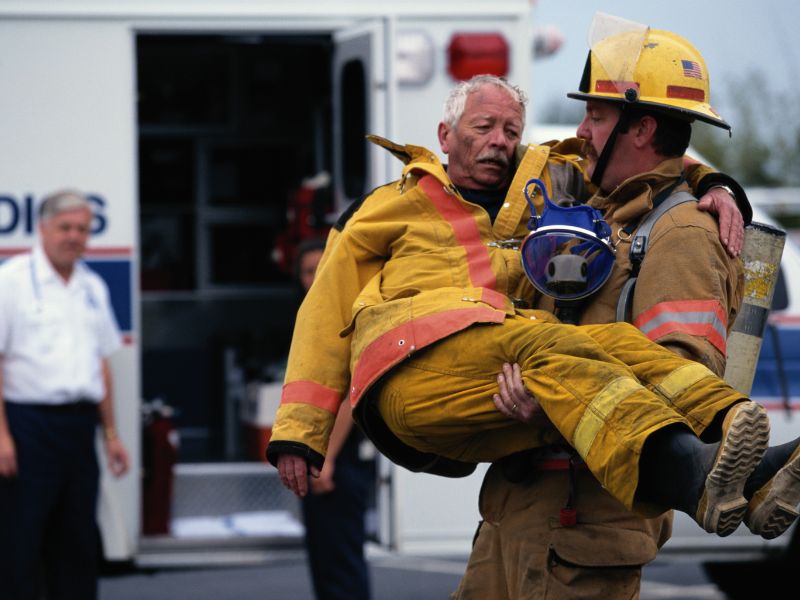
Preventing Injuries
Several proactive prevention tactics can be employed to help mitigate the risk of burns for those on the front lines in the fight against fires. Protective clothing, gear, and effective training and exercise are all key elements to consider.
Protective Gear
When it comes to protective clothing and gear used by firefighters, several pieces of equipment play an integral role in minimizing the risk of injury or death due to burns.
Heat-resistant turnout gear is essential in protecting against direct heat exposure. It is sometimes called bunker gear, and includes specialized boots, helmets, coats, pants, gloves, safety goggles, and hoods designed specifically for firefighting.
The addition of thermal imaging cameras in their gear helps firefighters detect potential hot spots where they can be exposed to extreme temperatures before entering a burning building or structure.
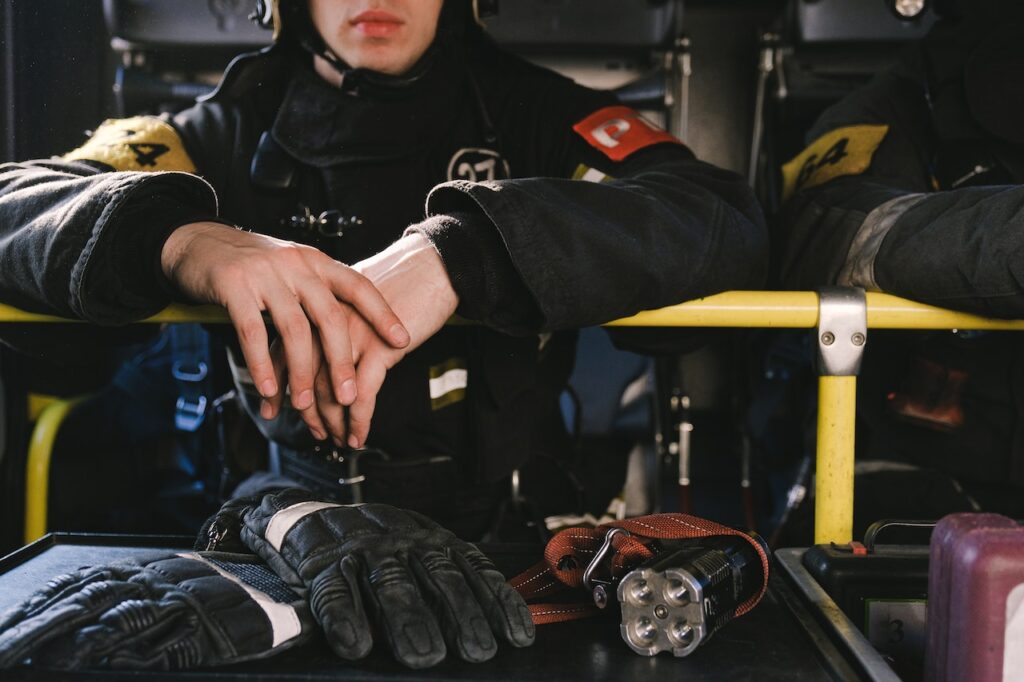
Special Tools
Fire retardant gels and foams are some of the most important tools firefighters use to shield themselves from heat and flames. These products contain chemicals like polymers that create a barrier between skin and heat sources. Firefighters spray retardant gels and foams onto clothes for an extra layer of protection which can help minimize burns or other injuries caused by high temperatures.
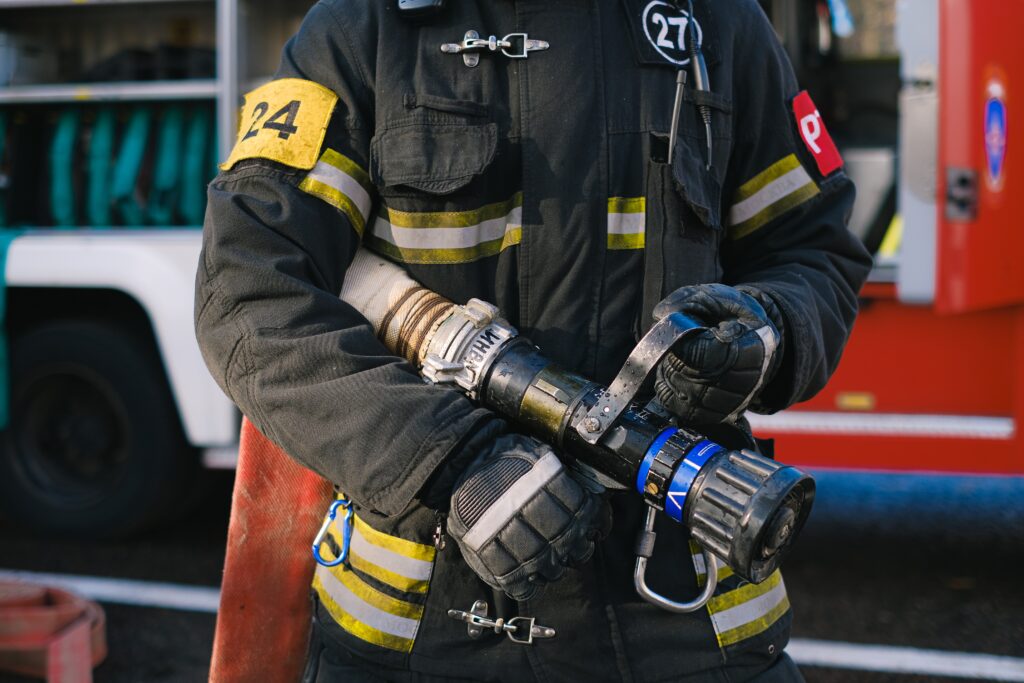
Firefighters also use special tools such as hoses, water cannons, and foam guns to fight fires quickly while reducing the risk of injury. For instance, certain hoses have been designed specifically for firefighting. These hoses have nozzles that can deliver concentrated streams or wide-angle sprays at high pressure, which gives firefighters greater control over fires than ever before.
SCBA
SCBA, or self-contained breathing apparatus, is a critical piece of equipment for firefighters. It allows them to breathe safely in environments that would otherwise be immediately dangerous to life or health, such as during a fire or when dealing with hazardous materials. Firefighters should wear SCBA because they are often called upon to enter environments that are dark, smoky, and filled with potentially dangerous fumes. Without an SCBA, they would be unable to breathe and would be at risk of serious injury or death.
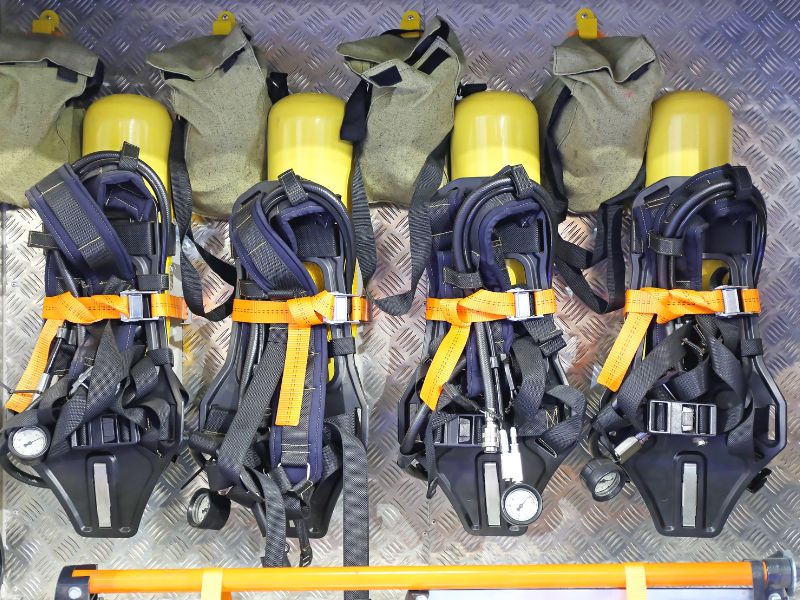
SCBA with compressed air for firefighters
Training
Training plays an essential role in mitigating risk factors associated with burns while on the job. A fire department should train firefighters in proper techniques on how to use their firefighting equipment safely and effectively when entering an environment with extreme temperatures or hazardous chemicals. Firefighters should also be trained on the available containment strategies they can use if they encounter a situation where they may become exposed to severe heat or dangerous materials while fighting a fire.
Firefighters should exercise frequently to reduce risk factors associated with burns during firefighting operations. Physical fitness is often a key factor in determining whether a firefighter can safely perform his duties under intense conditions without suffering injuries due to fatigue or overexertion.
Regular physical training will help firefighters remain physically fit to perform better during high-stress situations where quick decision-making is necessary for avoiding potential risks associated with burns or other injuries caused by extreme temperatures or hazardous materials found at a fire scene.
Despite all of the safety protocols and precautions that they take while on duty, firefighters are exposed to dangerous environments with potentially hazardous temperatures and flames that can cause severe burns, even while wearing proper protective gear. Fortunately, instances of injury or death among firefighters are rare due to the numerous preventive measures taken by fire departments around the world.


